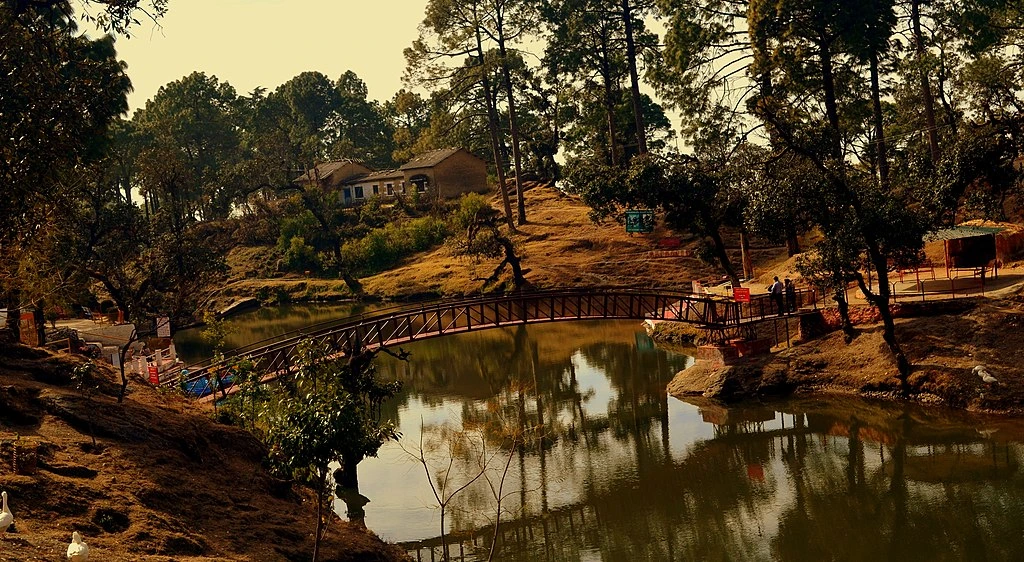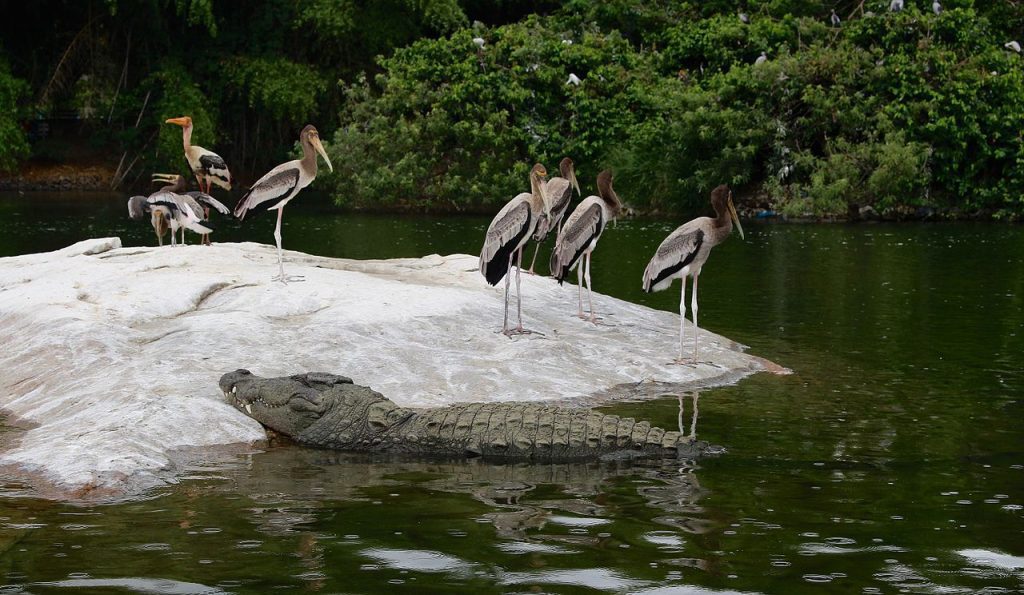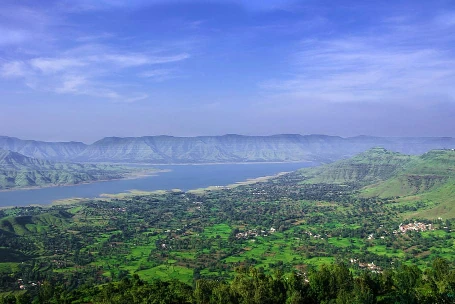It’s fascinating that Sanskrit, the oldest language in the world, once revered as devabhasha – the language of the gods – is now among the least spoken languages in India. In ancient India, it was the primary language of scholars and intellectuals. My lifelong dream has been to learn Sanskrit, enchanted by its historical and cultural significance. Living abroad posed challenges to this pursuit, but when I relocated to Bangalore, I seized the opportunity to enroll in Sanskrit classes. These lessons only deepened my passion for the language.
One day, my Sanskrit teacher shared an intriguing secret with me: there exists a village not far from Bangalore where Sanskrit is still spoken fluently. Astonished, I learned that in this village, even ordinary shopkeepers and agricultural laborers converse in Sanskrit, or at the very least, understand it. Driven by curiosity and excitement, I booked a Savaari from Bangalore and embarked on a journey to Mattur, the last Sanskrit-speaking village in India.
The road to the last Sanskrit-speaking village in India
I embarked on a road trip with my Savaari driver, Kiran, who was incredibly gracious throughout the journey. Tucked away on the outskirts of Shimoga City, Mattur village is over five hours from Bangalore. The scenic route took us past Davanagere, where we stopped to savour the best authentic Davanagere benne dosa. Continuing our journey, we passed through Chitradurga and Tumakuru before finally arriving in the bustling village of Mattur.
At first glance, Mattur village appeared remarkably developed, with block-paved roads lined with well-built houses and new cars parked outside. This traditional village, surrounded by arecanut trees and lush fields, has a smooth road leading to it, revealing a cluster of simple yet tightly packed concrete houses. To the casual visitor, Mattur village fits the definition of idyllic, but there is so much more beneath the surface.
Mattur village – Where ancient Sanskrit meets modern India
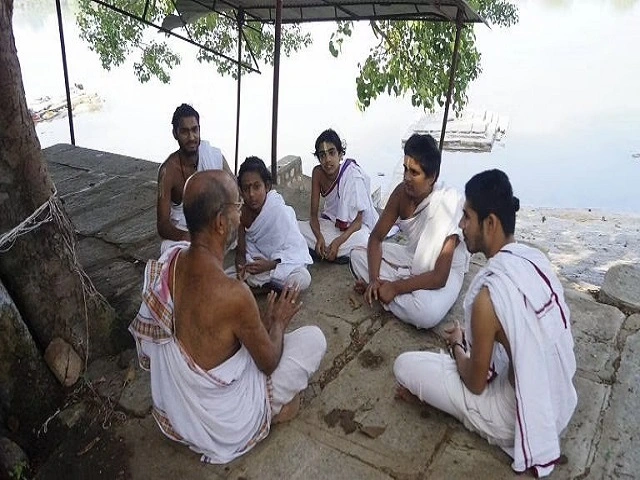
As I entered the village, I realized that the phrases most commonly heard on the streets are “katham aasthi” (Sanskrit for “How are you?”) and “aham gachchami” (“I am going”). Street names in the village are in Sanskrit, and everyday conversations about items procured from the market or household chores are conducted in this ancient language. Everyone here, from small children to elderly people, speaks Sanskrit. It’s fascinating to see the language spoken by people wearing jeans and t-shirts, talking on cell phones, or riding motorbikes. Mattur village has become a charming metaphor for ancient India in modern times.
During my visit, I met Rakesh, an IT engineer from Mattur village who works in Bangalore and was home for his sister’s engagement. He told me how the village has produced more than 50 software engineers. Although he conversed with me in Kannada, his fluency in Sanskrit was so remarkable that it felt like I was listening to a heavenly language. He also shared that Mattur village wasn’t always a Sanskrit-speaking village; it has a rich history behind it.
The origin of Mattur – A modern haven for ancient Sanskrit
Rakesh shared the fascinating history of Mattur, where the Sankethis, a community of Brahmins who migrated from Kerala, have lived for the past 600 years, leading an insular way of life centered around Sanskrit. Until the early 1980s, the villagers spoke Kannada, the state’s regional language, as well as Tamil, due to the influence of laborers from neighboring Tamil Nadu.
“There was a movement in favor of Sanskrit,” Rakesh explained. “Sanskrit had been criticized as the language of the upper-caste Brahmins and was displaced by Kannada. The priest of Pejawar Mutt called for Mattur village to become a Sanskrit-speaking village. Remarkably, it took just two hours daily for ten days for the entire village to start conversing in Sanskrit.”
Since then, Sanskrit has been spoken not only by the Sankethi Brahmins of the 3,500-strong village but also by communities from socially and economically underprivileged sections of society. The Sankethis, a small community of around 35,000 people in India, have a unique language called Sankethi, a mix of Kannada, Tamil, Malayalam, and some bits of Telugu. Today, 150 of the 400 students at the local Sri Sharada Vilasa school study Sanskrit as their first language, with English as their second language and Kannada, Tamil, or any other regional language as their third.
The academic impact of Sanskrit in Mattur
Many of Mattur’s youth have ventured abroad to study engineering or medicine, and I was curious whether learning Sanskrit had helped them develop a mindset conducive to understanding other languages, including those used in computer sciences. Rakesh affirmed this connection, saying, “Yes, there is a link if you delve deep into Sanskrit. Those who have studied Vedic mathematics—which dates back to ancient India when Sanskrit was the primary language of scholars—have developed a logical mindset that aids in information technology.”
He added, “I have learned some Vedic maths, which has been beneficial. While others rely on calculators, I can perform calculations without one.” This insight highlights how the study of Sanskrit and Vedic mathematics can foster a logical and analytical mindset, providing an academic advantage in fields such as IT and engineering.
Sanskrit and beyond – The comprehensive curriculum of Mattur
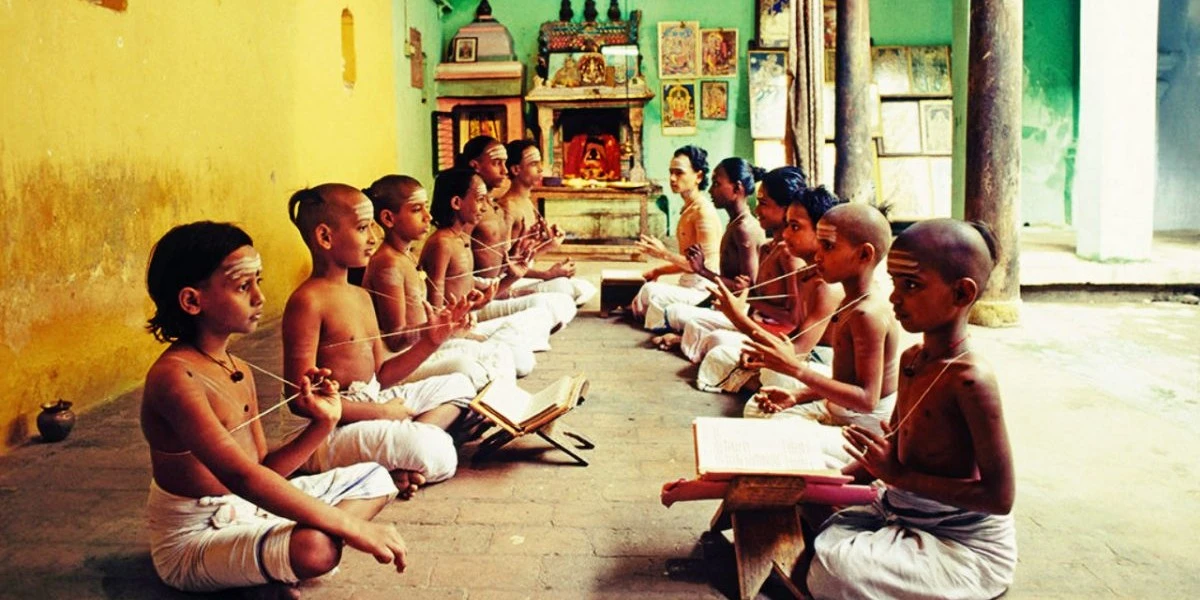
Education in Mattur village is modeled on the principles of traditional Vedic learning, although some modern subjects are also taught. To learn more about it, I went with Kiran and Rakesh to a local school. The giant statue of goddess Saraswati at the center of the school courtyard and the Sanskrit signboard outside the gate set the perfect scene for this story. Rakesh explained that children at the Mattur school in Shimoga, Karnataka, are taught the Vedas once they turn 10. All students from the village speak Sanskrit fluently.
The village schools emphasize the study of Sanskrit literature, grammar, and philosophy. Students recite Vedic hymns and learn ancient scriptures from their teachers. Additionally, subjects like mathematics and science are also part of the curriculum. The institutional support for the village’s education system comes from the “Sanskrit Pathshala,” where formal instruction in Sanskrit is provided to children.
Teachers in Mattur village are often scholars with deep knowledge of Vedic texts and Sanskrit grammar. They ensure that the transmission of knowledge is both accurate and profound. This unique educational model fosters a deep connection to traditional learning while also incorporating essential modern subjects, providing students with a well-rounded education that bridges ancient wisdom and contemporary knowledge.
The academic impact of Sanskrit in Mattur
Many of Mattur’s youth have ventured abroad to study engineering or medicine, and I was curious whether learning Sanskrit had helped them develop a mindset conducive to understanding other languages, including those used in computer sciences. Rakesh affirmed this connection, saying, “Yes, there is a link if you delve deep into Sanskrit. Those who have studied Vedic mathematics—which dates back to ancient India when Sanskrit was the primary language of scholars—have developed a logical mindset that aids in information technology.”
He added, “I have learned some Vedic maths, which has been beneficial. While others rely on calculators, I can perform calculations without one.” This insight highlights how the study of Sanskrit and Vedic mathematics can foster a logical and analytical mindset, providing an academic advantage in fields such as IT and engineering.
The Mattur village school has one of the best records in the district and boasts of toppers year after year. The teachers at the school say that learning Vedas and chanting have helped children with their memory and focus.
Mattur’s tightly woven fabric – The challenges of tradition and change
Almost every house in this Brahmin village has an IT professional, many of whom work abroad. The Sankethis are proud of their culture, and almost every NRI ensures they attend rituals and festivals back home. The crime rate is extremely low, as the village operates like an extended family. Mattur’s social structure is unique, reminiscent of the ancient Indian village where communal bonds are strong, and a collective ethos is deeply rooted. Mutual respect and cooperation are practiced, with elders having significant influence in guiding the younger generation.
Though Mattur village staunchly holds onto age-old traditions, it does not live in isolation from the world. However, not all are welcome. Rakesh told me that last year, for the first time, a boy from one of the families married a girl from North India. Until then, the community had thrived on marrying within, or at most, into Brahmin families from nearby areas. The local reaction to this ‘outsider’ marriage was predictable: many residents have yet to come to terms with it and have stopped visiting the family.
“This family is wealthy, so they dared to break tradition. If any of us commoners did the same, there would be hell to pay,” said a teacher at the school. There’s a palpable fear of being cut off from society, and many youngsters want caste barriers lifted. In Mattur, a significant gap exists between the elders and the younger generation regarding the ideal way of life. Elders of this patriarchal society enforce strict caste norms, and even today, bringing a guest from another caste can be frowned upon.
“I’ve faced many embarrassing moments after bringing friends from other castes home. My mother wouldn’t like it. I understand change is necessary, but the elders need time. They cannot change so fast,” says Rakesh. “The community is too rigid. We cannot afford to be cut off for so long.” He adds that growing inequality between the rich and poor is also causing some concern.
Places to visit in Mattur Sanskrit Village
Rakesh guided us on a walk around the village. Despite its small size of 600 people, Mattur village is rich in cultural and communal experiences. I loved the sense of community and openness that permeated the streets.
Bank of River Tunga
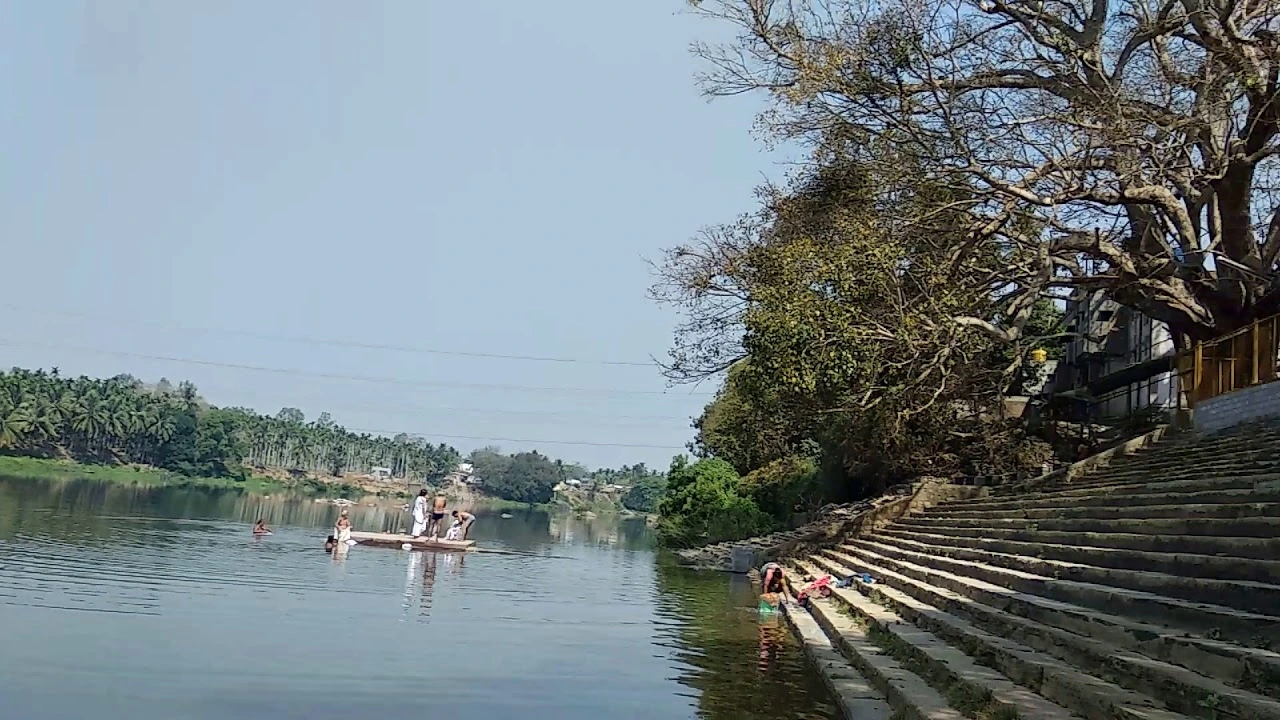
On the banks of River Tunga, there is an open space where Agnihotras or Havans are performed. Although I visited in the afternoon and missed attending one, I am determined to return just to witness this ancient ritual by the river.
Temples
The village boasts seven temples. Three temples, Keshav, Sri Ram, and Laxmi Narayana, are dedicated to Vishnu. Another three, Trayambakeshwara, Gowri Shankar, and Someshwara, are dedicated to Shiva. Additionally, there is a temple dedicated to Anjaneya or Hanuman.
We visited the Laxmi Narayan Temple located at the village entrance, also known as the Durga Temple. This small, one-room temple hosts women who perform kirtan every evening.
Vedshala and Gurukul
The highlight of my visit was the Gurukul. This simple, traditional home, where shoes are removed upon entering, houses young boys who live and study Indian Scriptures.
The Gurukul also includes a small library containing Sanskrit scriptures and books. I wish they had more funds to create a beautiful library for wider access. Currently, the manuscripts and books are stored in steel cabinets.
Village School
Visiting the village school was a delightful experience. I interacted with the 5th-grade students, who impressed me with their knowledge of Sanskrit. The most fascinating part of visiting the village is hearing the conversations in Sanskrit. If you know at least one Indian language, you can follow along with the conversations to a large extent.
Tips for visiting Mattur
- Accommodation: Mattur is a small village that does not have any dining places or guesthouses. If guests want to stay in the village for a couple of days, they can stay in the local village school (Pathshala). The villagers in Mattur village also offer homestays for guests.
- Learning Opportunities: Brahmin males have the option of learning the Vedas here. The village is known for its traditional Vedic learning, and visitors interested in this can engage with local scholars.
- Language Immersion: To fully experience the cultural uniqueness of Mattur, visitors are encouraged to learn and use basic Sanskrit phrases. This not only shows respect for the local customs but also enriches the overall experience.
- Cultural Etiquette: Respect local customs and dress modestly. Participation in cultural and religious events is encouraged, but visitors should seek permission and guidance from the locals to ensure they adhere to the traditions properly.
- Environmental Awareness: The village is located in a serene and natural setting. Visitors should be mindful of their environmental impact and avoid littering or disturbing the local flora and fauna.
- Transportation: Plan your transportation in advance as Mattur village may not be easily accessible via public transport. Hiring a private vehicle or arranging for transport with the help of locals can be a good option.
- Local Cuisine: While there are no dining places, guests can enjoy authentic home-cooked meals by staying with local families. This offers a unique opportunity to taste traditional cuisine and understand local food practices.
The future of the Sanskrit-speaking village Mattur
From what I’ve learnt, the people of Mattur Village take great pride in their language and culture, and they go to great lengths to preserve it. For instance, they have implemented a policy of speaking only Sanskrit during religious and cultural events. The villagers believe that this practice helps to keep the language alive and ensure that it is passed down to future generations.
Mattur Village is a shining example of how a small village can preserve and promote a language that is in danger of dying out. The villagers’ dedication to Sanskrit is a testament to the power of language to shape and define a culture. Moreover, it is a reminder that India’s cultural heritage is not just a relic of the past but a living, breathing tradition that continues to thrive in unexpected corners of the country.
Nearby attractions to visit when in Mattur
After leaving Mattur, I decided to explore some nearby gems, and thanks to Kiran’s expertise, I was able to visit several wonderful locations:
Mattur Lake
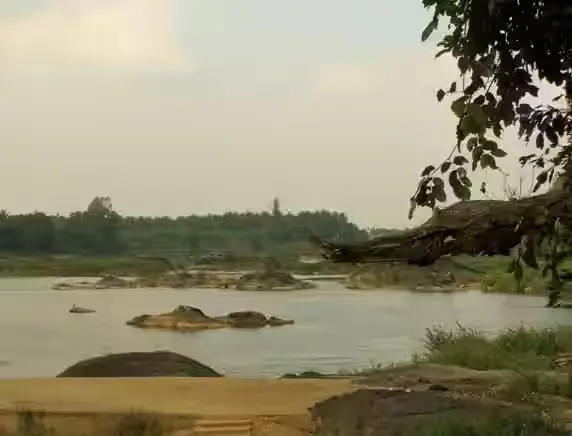
Kiran took me to Mattur Lake, a serene spot perfect for a relaxing afternoon. The tranquil waters and picturesque surroundings provided a peaceful escape and a chance to reflect on my enriching experience in Mattur.
Shivamogga Zoo & Safari
Next, we visited the Shivamogga Zoo & Safari, which offered an exciting opportunity to see a variety of wildlife up close. The well-maintained zoo and the safari experience were both educational and enjoyable, making it a great spot for nature lovers.
Gajanur Dam
The Gajanur Dam was another highlight of our trip. The impressive structure and the scenic views of the river and surrounding greenery made it a perfect spot for photography and relaxation.
Sakrebailu Elephant Camp
Finally, Kiran took me to the Sakrebailu Elephant Camp, where I had the chance to see elephants in a natural setting. Watching these majestic creatures being cared for and interacting with them was a memorable experience.
I highly recommend visiting these locations while planning a trip to Mattur. The nearby city of Shimoga is a great place to stay, offering comfortable accommodations and additional attractions to explore. You can also conveniently book a cab from Shimoga to make your travels even smoother.
Other Sanskrit-speaking villages in India
While Mattur village is renowned as a Sanskrit-speaking village, there are several other villages in India where Sanskrit is actively spoken and preserved.
Hosa Halli, Karnataka
Regarded as Mattur’s twin village and located across River Tunga, Hosa Halli can be easily reached by crossing a small concrete bridge. In the 16th century, King Krishna Deva Raya designated Hosa Halli and Mattur as key areas for nurturing Sanskrit. These villages have gained international recognition for their successful implementation of the language, attracting people from all over the world who come to learn Sanskrit.
Jhiri, Madhya Pradesh
Located roughly 45 km from the Rajgarh district, Jhiri’s walls are adorned with Sanskrit phrases, giving it a distinctive look. With just 1,000 residents, everyone in the village speaks Sanskrit as their native language. The older villagers teach children in the temples, creating a beautiful and educational environment. Weddings are particularly special, with women singing Sanskrit songs as part of the rituals. Jhiri is becoming a popular attraction for travelers visiting Madhya Pradesh.
Sasana, Odisha
Mainly inhabited by Brahmins, Sasana is home to about 50 households and approximately 300 residents. The village has a long tradition of Sanskrit learning. Nearby, the village of Babkarpur boasts a tiny temple honoring the renowned poet Kalidasa, highlighting the area’s devotion to the language.
Ganoda, Rajasthan
Situated in the Banswara district of Rajasthan, Ganoda is another notable Sanskrit-speaking village. Over two decades ago, the villagers primarily spoke their regional language, Wagadi. Sanskrit was introduced in schools and colleges and included in the academic curriculum, leading to fluency among students. As time passed, even the elders began to learn Sanskrit from the youngsters. Today, all residents of Ganoda speak Sanskrit, making it a remarkable example of linguistic revival.
Why Visit Mattur village with Savaari?
Visiting Mattur village was one of the most fulfilling experiences for me. I gained a deep appreciation for Sanskrit and understood the importance of preserving this ancient language. My trip was made even more amazing by my trusted chauffeur, Kiran, who was not only knowledgeable about the area but also extremely patient. He took me to nearby attractions and waited patiently while I explored the village, ensuring a smooth and comfortable journey back home.
Traveling with Savaari offers several advantages. The convenience and comfort of their service make the journey stress-free and enjoyable. The well-maintained vehicles ensure a smooth ride, while drivers like Kiran enhance the experience with their local knowledge and insights. This flexibility allows you to explore at your own pace without the pressure of adhering to a strict schedule. Safety is also a priority, with professional drivers trained to handle various travel conditions. Booking through the Savaari app is easy and efficient, making it simple to plan your trip. I highly recommend downloading the Savaari app and embarking on a trip to Mattur Shimoga for a truly enriching experience.
Last Updated on August 19, 2024 by Shabari Shankar



